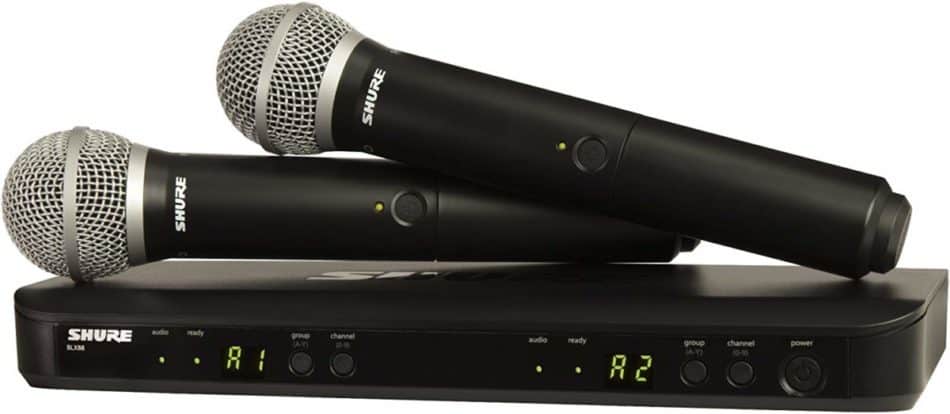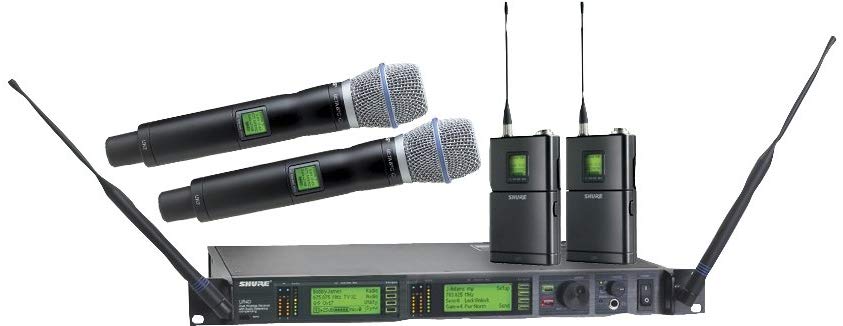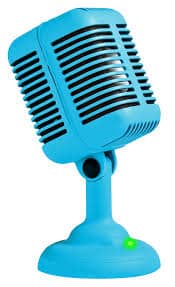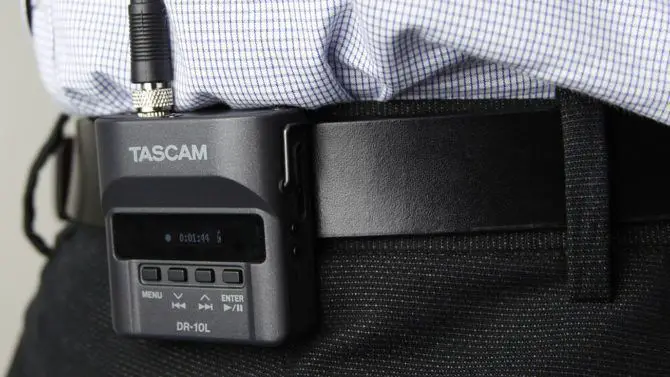In the new world of Audio production, Wireless Microphones and their Systems have come a long way. The Professional Wireless Mics meet the demands of Singers, Live, Audio broadcasting, and have never been better. If you know what to look for then you can save money. Pro systems are not as costly or complicated as you think. Best wireless microphone for singers
- Easy Set-Up
- No FCC regulations
- Capable of long transmission distance
- Clear frequencies-470 to 548Mhz bands.
- Range of 1,000 ft. or 2x the distance you’ll need.
- Not operating in the 700 MHz bands, which is reserved for fire & police.
- Wireless Mic-best for your application
- VHF or UHF band frequency is available
Specific Wireless Mics are built exactly for your game, your instrument, and you’re environment while transmitting. There is a Wireless Mic for everyone and a System to run it. Choose wisely.
How Does a Wireless Mic Work
A Wireless Microphone is a mic without a physical cable connecting it directly to the sound recording or amplifying equipment to which it is dedicated.
Also known as a radio microphone, it has a small, battery-powered Transmitter in the microphone capsule, which transmits the audio signal from the microphone by using radio wave frequencies to a nearby receiver unit, and or sound system which recovers the audio and plays it through the speakers or into recording equipment.
Shure Microphone Company claims, to build the first Wireless Mic called the “Vagabond” system in 1953 was the first “wireless microphone system for performers.” Its field of coverage was a circle of “approximately 700 square feet,” which corresponds to a line-of-sight distance of only 15 feet (4.6 m) from the receiver.
Soon after, In 1957, the German audio equipment manufacturer Sennheiser Microphones created Mikroport. The pocket-sized Mikroport incorporated a dynamic moving-coil cartridge microphone with a cardioid pickup pattern. It transmitted at 37 MHz with a specified range of 300 feet. Introduced in 1958, the Sony’s CR-4 wireless microphone was recommended as early as 1960 for theatre performances and nightclub acts.
Todd Rungeron and the Rolling Stones were some of the famous performers that pioneered the Wireless Mics and were using them by the ’70s.
There are 3 components that are involved with a Wireless Mic:
- The Microphone
- Transmitter
- Receiver
Wireless Microphones-come in different styles that have specific purposes. The most common mic is the handheld mic which is what many people use when playing on stage in a live situation. They were very popular with comedians and singer-songwriters when first developed.
Another common wireless mic is the Lavalier or ‘lapel mic.’ This is what you would see talk show hosts and guests wearing. These mics are small and can be hidden easily under clothing. There is the Headset Wireless mic that the Exercise Instructors or Convention Speakers use to communicate. Choose the Wireless Microphone that’s best for your application.
Transmitters- are required to send the audio signal to be output as live sound. Handheld mics do not require a separate transmitter as there is one built right into the capsule. For smaller Wireless mics Transmitters can be seen on the source (Player). The pack usually is clipped to the person’s belt within a short distance of the microphone.
Receivers- the Receiver is an electronic device that accepts the radio signal from a Transmitter and changes it to an audio signal. They come in either single of multi-channel receivers, depending on how many wireless mics you will be using at the same time. Multi-channel receivers are often available in either dual or quad capabilities.
Wireless microphones usually use the VHF or UHF band frequency, since they allow the transmitter to utilize a small unobtrusive antenna that is hard to see on stage. Cheaper units use a fixed frequency but most have several frequencies available.
Pros and Cons of Using Wireless Mic Systems
There are some real advantages to using a Wireless mic not only for Rock Stars like Mick Jagger and the moves that he incorporates in his shows but Stage Plays amplifying theaters without the intrusive visual scene making stage shows more realistic.
When the mic is fixed to the performer or speaker, the mic will turn and move as that person does. This prevents the audio drop-offs that can occur when someone turns away from a mic-stand or another fixed mic. Along with any Live large shows in Vegas for magicians and Ministers in the new world of Super Churches and Sporting events.
There still are some disadvantages that come from:
- Sometimes limited range
- Some interferences from other radio equipment or other radio microphones
- Noise or dead spots (places where it doesn’t work, especially in non-diversity systems)
- Limited use of Mics
What Frequencies Can be Used by Wireless Mics
Wireless mic Systems and similar devices are designed to tune and operate on certain frequencies known as “spectrum bands.” Most wireless mics today operate in the various unused portions of the broadcast television bands, including both VHF and UHF channels. There are new rules concerning these frequencies you need to be aware of.
The FCC has this and other information printed on the Operation of Wireless Microphones website. Most Wireless Systems use frequencies from the TV bands. The FCC just wants to limit some of those bands. The best way to deal with this is to contact the manufacturer who made the system and you’ll find there is plenty of space to go around.
The most important rule is that wireless microphones are prohibited from operating in the 700 MHz band, which is reserved for public service entities such as police, fire, and emergency services, as well as for some commercial wireless broadband service providers.
The Best Frequency to Use
UHF (400 MHz and up) has been the standard for many years now and typically gives the strongest and best performance. Check with the new rules. In recent years, the FCC has placed new restrictions on the frequencies of operation for wireless microphones but wireless frequencies can still vary. The best combination of long transmission distance and clear frequencies is in the 470 to 548Mhz bands.
Try not to use Wireless Systems that use in the 2.4GHz band. That band experiences lots of interference and is virtually the same as your computer. But if you have too, you can use it in smaller rooms and spaces because their operating range is much shorter. Use 2.4GHz wireless microphones only in smaller rooms with no obstructions between the transmitter and receiver antennas.
A good rule of thumb is choosing a wireless system with a stated operating range twice the distance you think you need. Your wireless system must have an operating range of 1,000 feet or more. This ensures less interference that can affect your sound.
How to Connect a Wireless Microphone to a Sound System
- Make sure you have all the parts which are the receiver, the Antenna that will normally plug into the back of the receiver, and the Microphone which could be a Lavier, Handheld, or Headset that will plug into the Transmitter.
- Hook up the Plugs to the Unit-The Power supply that will plug into the back of the unit, the XLR cable that goes to the Mixer, Antenna for the Unit.
- Select the channel for the Receiver. Make sure you have the right channel selected and also there is no interference from other channels in the area. You can monitor channels in the area that will interfere with your system right from your own system at setup. Once you find an open channel Store it.
- Sync the frequency of the Transmitter to the Receiver– This is so they can communicate with each other. This is an automatic process on mostly all units. Normally a visual window on both pieces of equipment.
- Adjust the Sensitivity of the Microphones– This will adjust and feedback problems that may occur. You can even change a pattern pickup. Once done you’re going to store that number and move on.
- Adjust the Output to the Mixer– Decibel can be set and stored as a function as the manual setups before using the mic and the system in the show.
Some Good Wireless Mic Systems To Use-Low to Mid Priced
Shure BLX288/PG58 Dual Channel Handheld Wireless System with 2 PG58 Vocal Microphones, J10
- Included: BLX88 dual wireless receiver; 2 BLX2/PG58 handheld transmitters with integrated PG58 cardioid dynamic microphone capsules; 2 microphone clip
- Power and battery status LED
- Adjustable gain control
- Quick & easy frequency matching
- 2 AA batteries (included) provide up to 14 hours of continuous use
- 300 feet (91 m) operating range (line of sight)

BLX288/PG58 Dual Channel Handheld Wireless System The BLX288/PG58 Dual Channel Handheld Wireless System is part of the BLX wireless systems family. Shure BLX Wireless Systems combine professional-quality sound with a simple setup and an intuitive interface for legendary audio performance right out of the box. Precision-built and available in a variety of configurations, it’s the most accessible way to own the stage. Includes 2 PG58 handheld transmitters, BLX88 dual-channel receiver, 2 microphone clips, power supply, 4 AA batteries, and a user guide.
Shure UR124D/Beta87C Dual-Channel Combo Wireless System, H4

- UR4D Diversity Receiver
- 2400 Selectable Frequencies Across 60 Mhz Bandwidth
- Track Tuning Filtering Technology
- Up To 40 Preset Compatible Systems/Band (108 W/Multiple Bands, Region Dependent)
- Networked Automatic Frequency Selection
Most users do not need a license to operate this wireless microphone system. Nevertheless, operating this microphone system without a license is subject to certain restrictions: the system may not cause harmful interference; it must operate at a low power level (not in excess of 50 milliwatts), and it has no protection from interference received from any other device. Purchasers should also be aware that the FCC is currently evaluating the use of wireless microphone systems, and these rules are subject to change.
What is a Boundary Microphone – Mikingdesign.com
JimGalloway Author/Editor

References: How do wireless microphones work?


